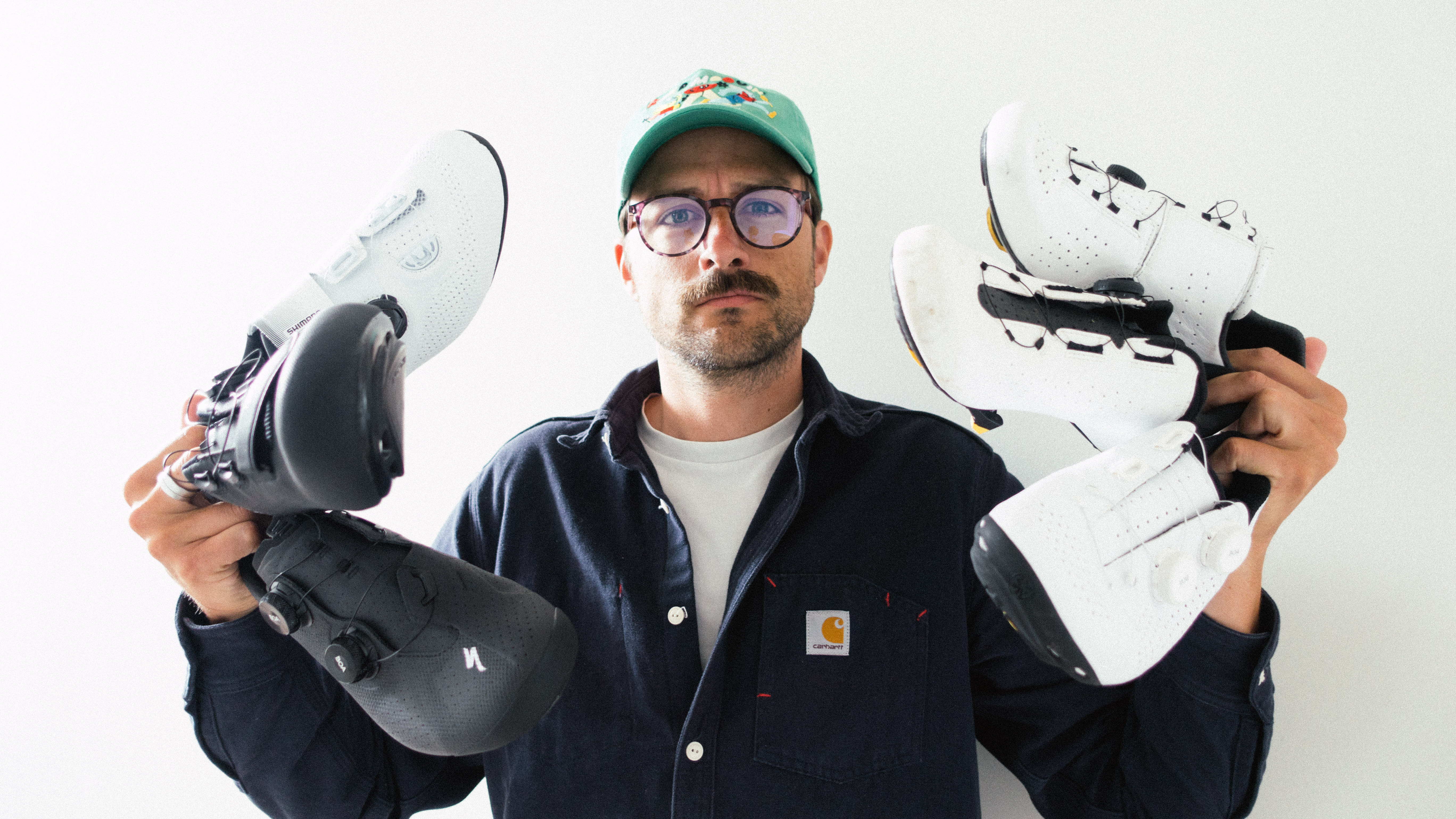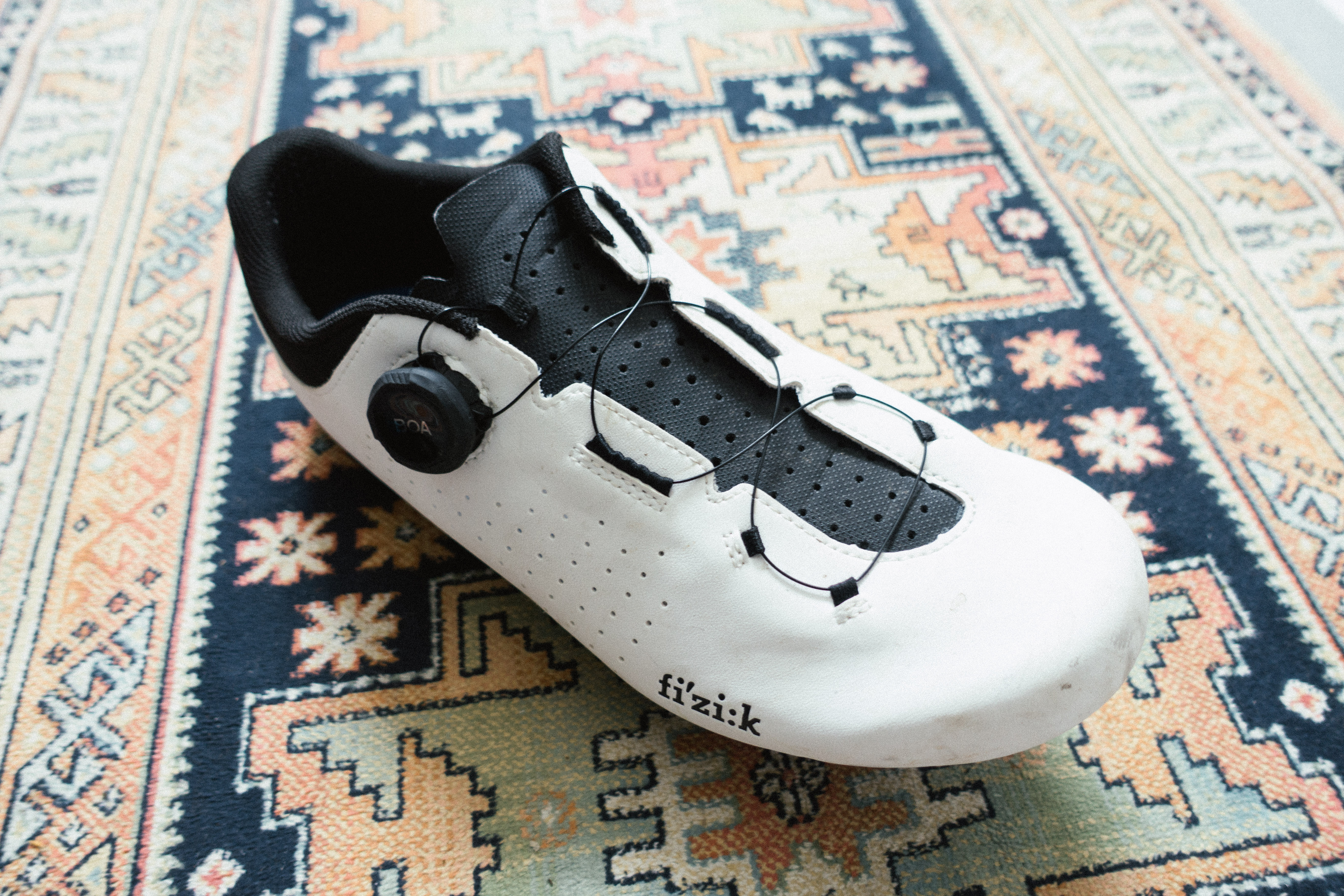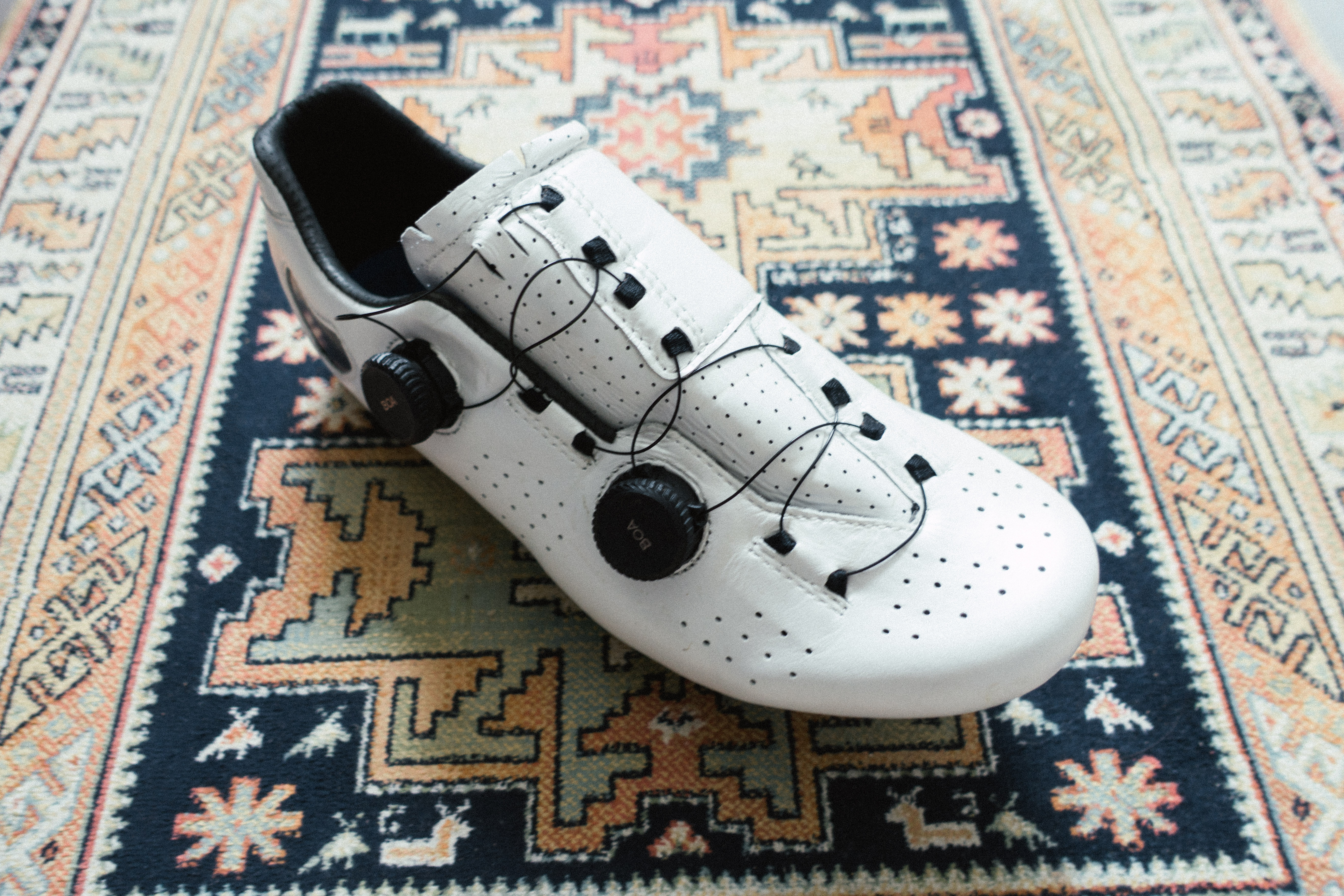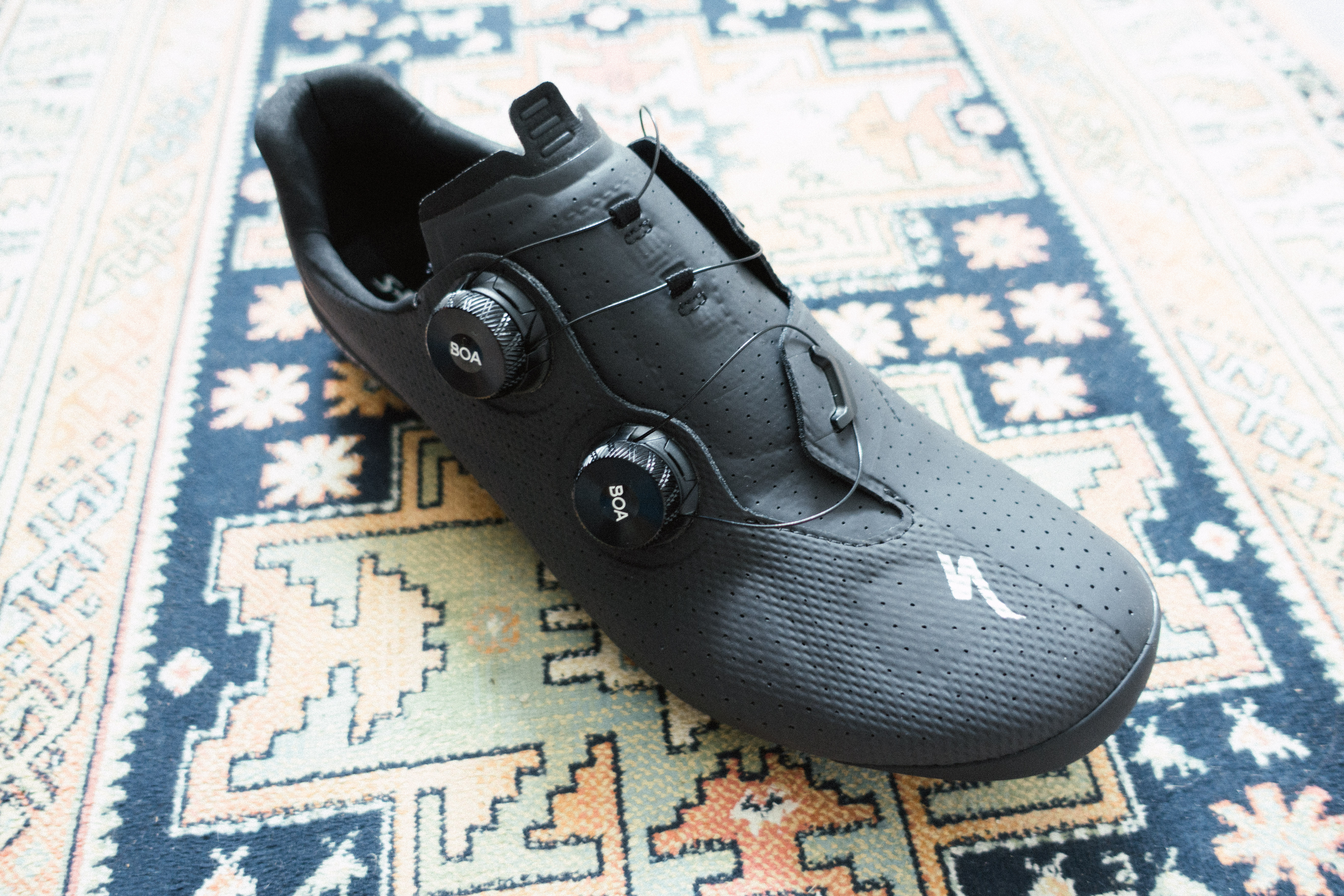
The best cycling shoes, or the best gravel cycling shoes for that matter, are a key part of your performance. Those of you with skinny feet can choose based on style, weight, or closure mechanism without having too much of an impact. Those of us with wide feet, and I count myself among you, cannot simply pick anything from the list without risking discomfort at best, and injury at worst.
For years I struggled in narrow shoes. I just assumed sore feet was just par for the course for cyclists, like how I also assumed that numb privates were the norm until I tried different saddles. It was only after a bike fit, during which I not only tried some wide shoes but also proper insoles, that I saw the light, and since then I’ve decided to make it my mission to pull together a comprehensive list of the brands that offer wide versions of their shoes, and where possible test them actually to let you know how wide they actually are. For reference, my feet are an EU44 and 102mm wide when splayed out with my weight through them. Not super wide, but wide enough that most normal bike shoes don’t fit.
If you are unsure whether you need wide shoes then I implore you to go and see a bike fitter. Many offer shoe-specific services, and from personal experience, I can tell you that the difference is night and day. For me, the additional power transfer was palpable, as well as an immediate improvement in my knee stability. Easily worth the weight penalty that comes with trading in my superlight shoes for some that actually fit me. If you want a quick and easy way to see if your current shoes are too narrow, simply whip the insoles out and stand on them on the floor; your foot shouldn’t spill over the side much if at all, and if they do then you likely need wider shoes.
The below list isn’t exhaustive, as I am yet to test every wide shoe on the market, but it is I hope relatively comprehensive and will be updated as and when I get my feet into more and more options to help you make the right choice. It must also be noted that I am neither a bike fitter nor a biomechanical expert. The mechanics of the foot, and the knock-on impacts that an improper shoe can have on the knee, hip, and lower back are myriad, and so I’m simply trying to provide you with a handy one-stop guide to what is available.
Wide vs High Volume
Before we dive into the list it’s worth noting that there is a difference between wide-fit shoes and high-volume shoes. Wide-fit shoes use a different, wider last and are often also higher volume (i.e. a bigger volume of void for your foot).
High-volume shoes, in contrast, use the same last (which may well be too narrow for you if you have wide feet), and simply add more material to the uppers to make a greater volume. This goes some way to helping allow your foot more room, but the widest part of your foot will still be bound by the often unforgiving material of the uppers.
In the days of internet shopping, it’s hard to say ‘Try them on in-store’, but that really is the best bet, or at least order from somewhere with a decent returns policy.
When it comes to volume, the stock insoles that come with cycling shoes are almost universally useless, offering little arch support to those who need it. I have high arches, so need a higher volume fit too, and swap insoles out immediately on every shoe I try. Again, a chat with an experienced bike fitter will stand you in good stead in this regard.
Bont

Bont does very well in catering to us wide-footed riders, as well as trying to offer greater room for the forefoot. It offers an array of fits, which are ‘narrow’, ‘standard’, ‘wide’, ‘Asian fit’, ‘double wide’, and ‘double wide Asian fit’.
‘Asian fit’ and ‘wide’ share the same forefoot width, but have a narrower heel, a squarer toe box, and a lower arch. ‘Wide’ is 1-2mm wider in the Riot series of shoes, and 3-4mm wider in the Vaypor series, with ‘double wide’ a further 3-4mm wider.
The Vaypor S, Helix, Zero+, Vaypor+, Crono, and Vaypor G come in the full suite of width and shape options, while the Riot, Riot buckle, Riot+ road, Riot MTB+ and Riot TR+ only come in ‘standard’ and ‘wide/Asian’.
That’s a lot of shoes, in a lot of options, which is commendable. The shoes are also heat mouldable, and from experience, this does go some way to helping tune the fit. It takes a few goes to truly get them to feel like they fit just so, usually with the judicious application of the back of a screwdriver, but it doesn’t take a great deal of expertise.
It is worth noting however that the shoes have a ‘bathtub’ sole, and are monumentally stiff. The carbon sole isn’t flat, but curves up at the sides and the front, so if they are just a hair too narrow then your foot is butting up against solid carbon rather than the flexible material of the uppers. Of all the brands I think Bont requires the most careful size and shape selection.
I have only personally used the latest Vaypor, and the Vaypor G, so I cannot speak for the entire range, but the standard Vaypor has a much lower edge to the bathtub at the forefoot and is a lot more forgiving than the Vaypor G.
Fizik

You may be surprised to learn that Fizik now offers a pretty wide range of wide-fit shoes, considering it’s an Italian band, which normally means super narrow. Its normal shoes are narrow, but its rapidly expanding wide range is actually wide, and not just high volume.
There aren’t different toe box or heel shapes like there are with Bont, and the range is currently limited to road models only, but this range spans the relatively budget Vento Omna to the top flight Vento Infinito.
In my experience, the widest and most forgiving is the cheapest Vento Omna Wide. The material used in the uppers is flexible enough to accommodate a little spillover, but the more flexible, non-carbon sole may not appeal to all. The heel is relatively wide though, and as I have narrow-ish heels there was some heel lift. I also got on well with the Tempo Decos, which does have a carbon sole.
The Tempo Overcurve R4 I found the least forgiving of the four models I tried, though it has the same last and sole width at the forefoot. A similar tale with the top-end Vento Infinito, though this was a little more forgiving. I am, I suspect, right at the upper limit of what these shoes can accommodate, and so the differences in the flexibility of the upper material have more of an impact.
I have yet to try the Vento Infinito Knit, but my experience of knitted uppers is that they are more forgiving, and so if you want to be safe then this is likely a decent starting point in the range if you want a carbon sole.
Lake

In conversations with my bike fitter, it seems Lake is basically the gold standard for wide shoes, and has a comprehensive size guide followed by a well-presented fit matrix that shows what shoes are available for on and off-road in four widths, three instep heights, four volumes, and two toe box sizes.
At the time of writing, the sizing on Lake’s shoes has changed slightly, with every option shunting in name terms towards a skinnier width. I previously was a wide, but now I am a regular, though this also varies between models; I need wider gravel shoes than I do road ones from Lake for example.
Your best bet is to thoroughly measure your feet and work with the charts, or a bike fitter. I have used the CX332 (wide), and the new CX333 (standard), which has superseded it. The 332 is still available in some places, and I found the fit of the upper a little easier to dial in, but both are superbly comfortable for my feet and are what I use as a preference despite the weight penalty unless it’s raining. They have leather uppers, which take an age to dry and are a little more hefty.
Likewise, the MX333 for gravel - this is my chosen off-road shoe, and while they’re even heavier, they are excellent. A lot of Lake models have a heat-moldable heel, too. My only gripe, primarily with the road models that I’ve tried, is that my outer toes slightly impinge, but given I have only tried two models from the range there’s every chance that my perfect shoe may still be out there.
Northwave

Northwave has two wide models, both at the more affordable end of the spectrum: The Core Plus 2 for road, and the Hammer Plus for off-road riding. I don’t have any standard-width Northwave road shoes myself with which to compare my wide test models, but compared to my Lake shoes they are a full 5mm narrower. Considering this is narrower than Lake’s standard fit I’d suggest that these aren’t really that wide. My colleague, Tom, has a pair of Norwave Veloce Extreme shoes, and while this isn't comparing like with like, the Core Plus sole is 3mm wider than the Veloce.
The uppers are pretty forgiving though, and it’s a different story with the Hammer Plus, which is noticeably wider than the Core Plus. If you like the look of the Hammer Plus then I’d suggest they may be worth a try, but I’d leave the Core Plus.
Shimano

Shimano offers five wide models, the S-Phyre RC9, RC7, and RC3 for road riders, and the S-Phyre XC9 and the XC3 for those riding off-road. The literature available on the Shimano site doesn’t mention a wider sole, but, rather greater ‘ball girth’. It’s safe to say these are higher volume versions, based on the brand’s same Dynalast last, rather than true wide-fit shoes.
In practice, I have tried out the RC7, and they are sadly a little on the narrow side for me. If you've normal-width feet but a high instep then don't overlook the Shimano range, but if you have wide feet I'd shop elsewhere.
Sidi
Another usually very narrow brand of shoe offering a high volume, but not necessarily a wider fit is Sidi. Its website outlines its ‘Mega Last’, which offers greater volume, a higher instep, and a wider heel cup, but no mention of a wider sole.
At the more affordable end, the Mega Last is used on the Alba 2 and Trace 2 for road and off-road respectively, while at the high end it is used on the Ergo 5 and Dragon 5, also for road and off-road respectively.
While I cannot speak for these Mega Last options from any personal experience, standard Sidi shoes are among the narrowest on the market in my experience, and while a higher volume may make them a little more forgiving, I suggest that they aren’t suitable for those with wide feet.
Specialized

Specialized has one wide offering, a wider version of its S-Works Torch shoes - high-end only. It is however worth noting that Specialized shoes, at the top end at least, have been getting wider. If the Torch fits your bill, and your budget, the wide version is certainly more roomy and in my short time with them so far I've found them to fit well.
I have tried a couple of top-end shoes from the Big S over the years, and while the Ares was too narrow for me, by the time 2024 rolled around and I got to using the new S-Works Recon I could ride in them without much discomfort. The S-Works Recon, as an example, is 4mm wider than the specialized standard road width, and a full 8mm wider than the Recon MTB shoe. The upper material is relatively inflexible, but if you’re finding specialized shoes just a little too narrow the Recon or Torch are good places to look.
Stomp Lox
A slightly leftfield inclusion, but one worth shouting about nonetheless. Stomp Lox hails from Shizuoka, Japan, and makes vibram-soled cycling shoes that are reminiscent of vintage hiking boots.
They are offered in a standard and a wide/Asian fit. My understanding is that the wide fit is wide, not just a higher volume and the shoes feature a boxy, squared-off toe box that looks to allow plenty of room for toes to spread.
I have yet to try them, though I would very much like to. If I am able to get my feet in a pair I will update this to report back, as on paper at least they seem to be an excellent option for wide-footed touring cyclists and commuters, or just any non-performance-oriented rider. Plus, they look gorgeous.







